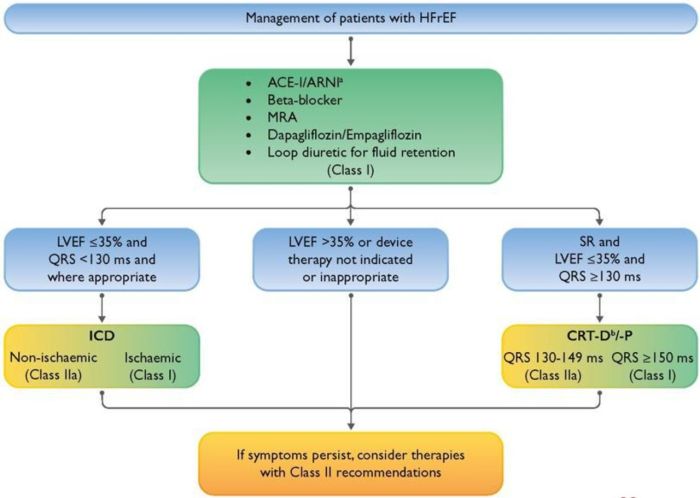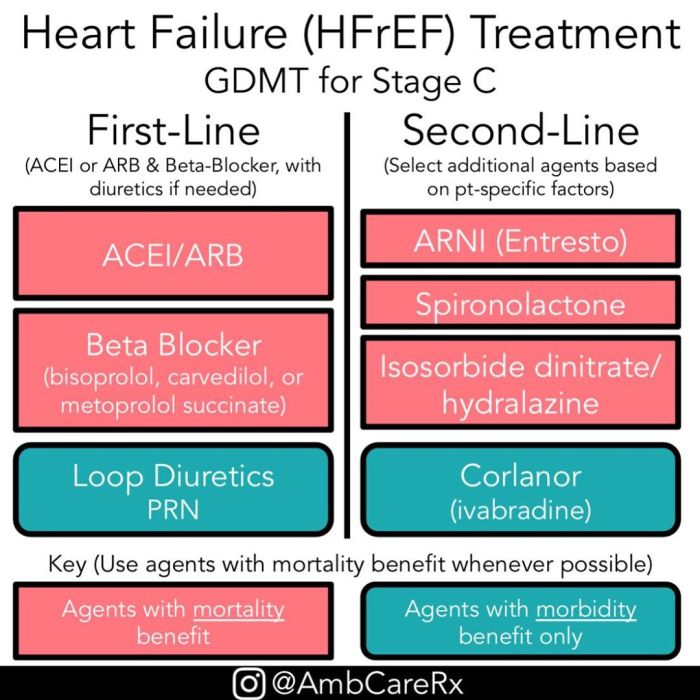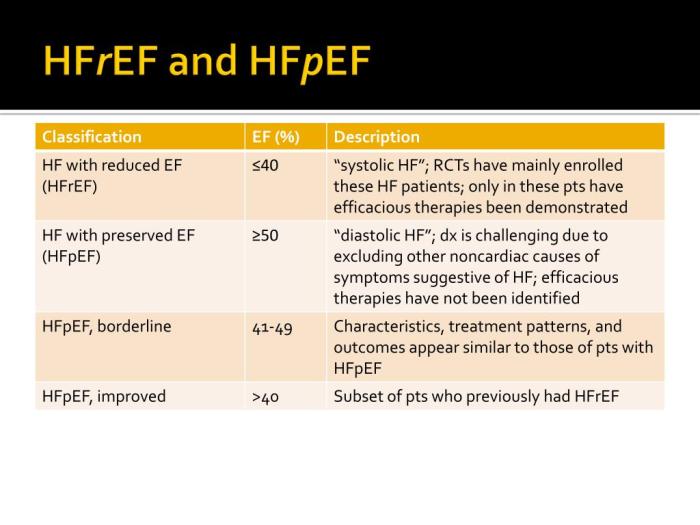Hfref medical abbreviation – HFrEF (heart failure with reduced ejection fraction) is a medical abbreviation that plays a crucial role in the assessment and management of heart failure. This comprehensive guide will delve into the meaning, significance, and applications of HFrEF in the field of cardiology.
HFrEF refers to a condition where the heart’s left ventricle is unable to pump blood effectively due to a reduced ejection fraction, which measures the percentage of blood ejected from the ventricle during each heartbeat. This condition can significantly impact cardiac function and overall health.
hfref Medical Abbreviation

hfref is a medical abbreviation that stands for heart failure with reduced ejection fraction.
It is used to describe a condition in which the heart is unable to pump enough blood to meet the body’s needs. This can be caused by a variety of factors, including damage to the heart muscle, narrowing of the arteries that supply blood to the heart, or high blood pressure.
Symptoms of hfref
- Shortness of breath, especially when lying down or exercising
- Fatigue
- Swelling in the feet, ankles, and legs
- Rapid or irregular heartbeat
- Chest pain
- Lightheadedness or dizziness
- Confusion
Treatment of hfref, Hfref medical abbreviation
Treatment for hfref typically involves medications to improve heart function, reduce fluid retention, and prevent blood clots. In some cases, surgery or a heart transplant may be necessary.
Outlook for hfref
The outlook for hfref depends on the severity of the condition and the underlying cause. With proper treatment, many people with hfref can live long, active lives.
hfref and Other Medical Conditions

hfref, or heart failure with reduced ejection fraction, is a condition in which the heart’s left ventricle is unable to pump enough blood to meet the body’s needs. hfref is most commonly caused by coronary artery disease, but it can also be caused by other conditions, such as cardiomyopathy, valvular heart disease, and congenital heart defects.
hfref can lead to a number of other medical conditions, including:
- Pulmonary hypertension:hfref can lead to pulmonary hypertension, or high blood pressure in the lungs. This can occur when the heart is unable to pump enough blood to the lungs, causing the pressure in the lungs to increase.
- Renal dysfunction:hfref can also lead to renal dysfunction, or kidney problems. This can occur when the heart is unable to pump enough blood to the kidneys, causing the kidneys to function less effectively.
It is important to note that hfref is not the only cause of these conditions. However, it is a significant risk factor for developing these conditions.
The use of hfref in assessing other medical conditions beyond heart failure is still in its early stages. However, there is growing evidence that hfref can be a useful tool for evaluating conditions such as pulmonary hypertension and renal dysfunction.
One of the limitations of using hfref in these contexts is that it is not always clear what the normal range for hfref is. This can make it difficult to interpret the results of hfref tests.
Another limitation of using hfref in these contexts is that it is not always clear how to treat hfref. This can make it difficult to manage the underlying condition.
Despite these limitations, hfref is a promising tool for evaluating other medical conditions beyond heart failure. As research continues, it is likely that hfref will become an increasingly important tool for managing these conditions.
End of Discussion: Hfref Medical Abbreviation

In summary, HFrEF is an essential medical abbreviation in cardiology that helps healthcare professionals assess heart failure severity, guide treatment decisions, and monitor disease progression. Understanding the concept of HFrEF empowers patients and caregivers with valuable information about their condition and enables them to make informed decisions regarding their health management.
FAQ Explained
What does HFrEF stand for?
HFrEF stands for heart failure with reduced ejection fraction.
How is HFrEF measured?
HFrEF is typically measured using echocardiography, an ultrasound imaging technique that assesses the heart’s structure and function.
What are the implications of having HFrEF?
HFrEF indicates a weakened heart muscle, which can lead to reduced blood flow to the body’s organs and tissues.